Milan vs Inter: Italy’s odd couple who share players and a stadium
The Milan derby is one of the peninsula's longest-running but least violent rivalries, as Kevin Buckley wrote for the February 2003 FourFourTwo magazine
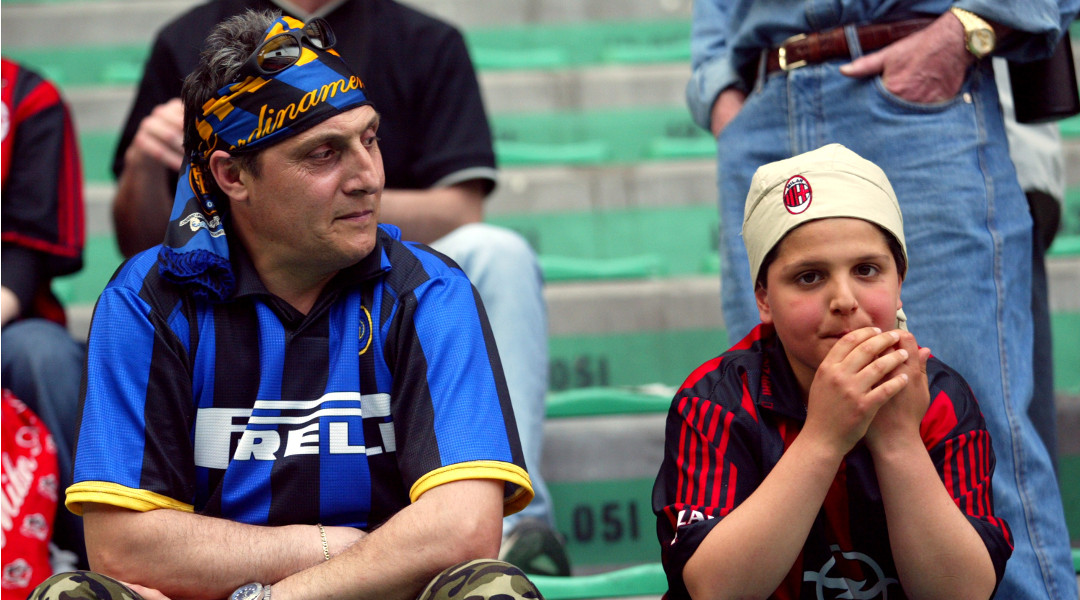
On a damp Saturday night, 80,000 expectant fans flock to the leafy, well-heeled western outskirts of Milan, Italy's football and fashion capital. From the outside, the three-tiered San Siro stadium resembles a giant Halloween pumpkin, shafts of white light beaming out through the slits of the six huge spiralling walkways around its perimeter.
Once inside, each end suddenly explodes 10 minutes before kick-off into huge, perfectly choreographed displays of banners, slogans, and colour-coded placards. The whole vibrant spectacle is down to the dedicated work of hundreds of members of the much-maligned Ultras, organised supporters groups, only some of whose members engage in violence.
But tonight they compete in an artistic battle orchestrated with a synchronisation worthy of La Scala, the city's other famous theatre a few kilometres away to the east in Milan's cobblestoned city centre.
The second tier of the Curva Sud (south curve) of the 'home’ side disappears under a red-and-black sea of placards. In a seamless scene-change, an enormous banner unrolls above the crowd, 40 metres by 30, depicting a cartoon scene of Milan stars with the slogan La Storia Infinita – the never-ending story.
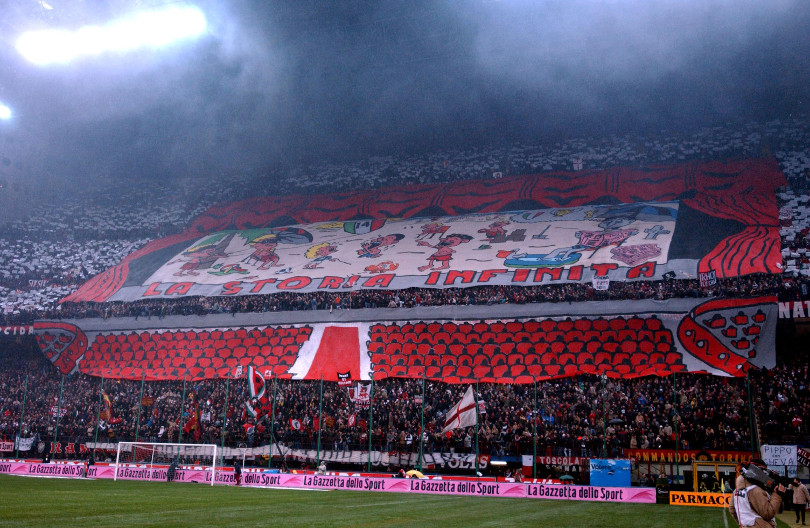
The 7,300 'visiting' Inter contingent respond by making the Curva Nord shimmer with hundreds of shiny blue-and-black placards, dotted with the famous bright yellow stars, sported only by teams who have won at least 10 titles.
Then they too unfurl above their heads a huge banner featuring Guiseppe ‘Peppino’ Frisco, one of the club's most popular directors, who died last season. Much loved for his mischievous media comments, the elderly lawyer is shown with his trademark wicked grin and making a vulgar hand gesture.
His message "to the worms in hell” is not lost on Milan’s Diavoli Rossi, the Red Devils. From the Milan end, fireworks shoot into the night sky from the front of the second tier. The whole show is carried off with style and humour, provoking gasps and applause from around the packed stadium, and will lead the evening TV sports bulletins.
Get FourFourTwo Newsletter
The best features, fun and footballing quizzes, straight to your inbox every week.
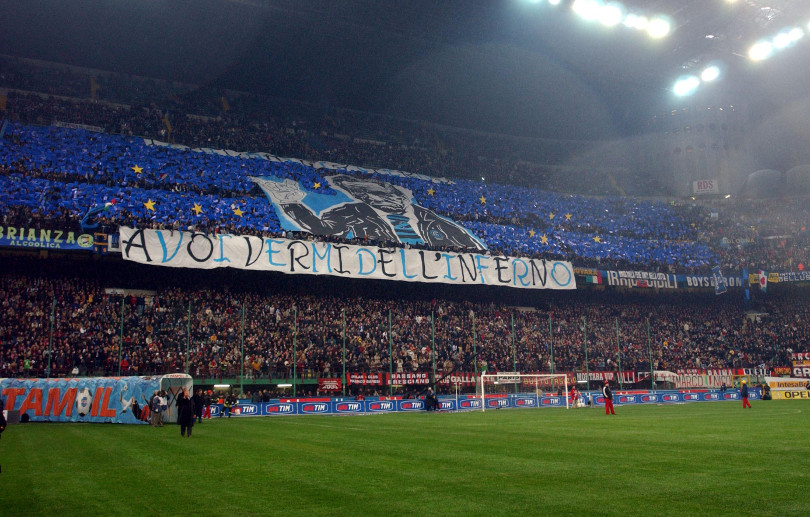
Title-chasing titans
Tonight's derby – in Italy the English term is used – has an importance beyond its usual city confines. For the first time in a decade Milan's two teams are simultaneously tilting for the Serie A title. Just one week previously, they had found themselves sharing the very top spot in the table, an event not seen for an astonishing 30 years.
The line-ups feature a string of top Italians – Christian Vieri of Inter and his best friend Filippo ‘Pippo’ Inzaghi of Milan, Gigi di Biagio, Francesco Toldo, Paolo Maldini and his defensive sidekick of 15 years, Alessandro 'Billy’ Costacurta – but on the night this 253rd Milanese derby is won for Milan by a 12th-minute display of Brazilian football geometry.
The gangly Rivaldo threads a flat diagonal pass from the centre circle towards wide player Serginho on the left edge of the Inter box. Inter's Argentinian defender Nelson Vivas, standing in for countryman Javier Zanetti after the latter's midweek international duties, desperately stretches but can't cut out the inch-perfect ball.
With one deft touch the spidery Serginho takes the ball sharply square inside, wrong-footing keeper Francesco Toldo who is shaping to anticipate a burst toward the by-line down the left.
The move ends with a hard grass-cutting shot into the gaping Inter net, and the San Siro erupts with an ear-ringing roar. It is Milan's 97th derby win, now 10 more than Inter. Gate receipts are around €1.4m. The worldwide TV audience runs into tens of millions.
It wasn't always thus.
British beginnings
In the very last days of the 19th Century, a small group of enthusiasts met one evening to establish the Milan Cricket and Football Club. Most football historians quote the date as December 16 1899, but in reality the original document of the club’s founding statute was lost, so the gathering could have been any time between the ninth and the 17th of the month.
There is also doubt over its location. Some accounts refer to the Hotel du Nord in Piazza Repubblica, others locate it at the nearby Bar Fiaschetteria in Via Berchet, which certainly became the regular meeting place. No exact figures exist for the numbers in attendance.
Half a dozen English names featured in the association's original membership and the driving force behind AC Milan was an English textile worker called Herbert Kilpin
But what is not in doubt is the club's English roots. Half a dozen English names featured in the association's original membership and the driving force behind that inaugural meeting of what would later become the mighty Associazione Calcio Milan – AC Milan – was an English textile worker called Herbert Kilpin.
A keen striker, Kilpin – the 29-year-old son of a Nottingham butcher – was the team's first captain, its first club president being one Alfred Edwards. So it was that the final letter 'o' was dropped from Milano to adopt the English spelling.
The club's original pitch was on the site of what is now Stazione Centrale, Milan's main railway station, a huge marble masterpiece of Italy's Fascist era of public works of the 1920s and 1930s.
Splinter group
But the history of the Milan derby is the history of a sporting divorce. The two parties separated over a point of principle without ever coming to blows, then ended up sharing the same home without ever quite kissing and making up. They are football’s odd couple.
The separation came just a little over eight years after that original gathering. A splinter group led by artist Giorgio Muggiani, broke away because it wanted to permit foreigners to play for the side, contrary to Federation regulations.
On March 9 1908 a group of likeminded rebels gathered together at the L'Orologio restaurant in Via Orefici, just a drop-kick away from the famous landmark of the giant Duomo cathedral. And thus was born Internazionale Milano, the new name proudly reflecting the reasons for the divorce.
"The colours they chose for their new kit reflected these early romantic leanings," says Fabio Monti, Inter expert at the Milan-based Corriere della Sera, Italy's leading daily newspaper. “The black was to represent the night, blue for the sky."
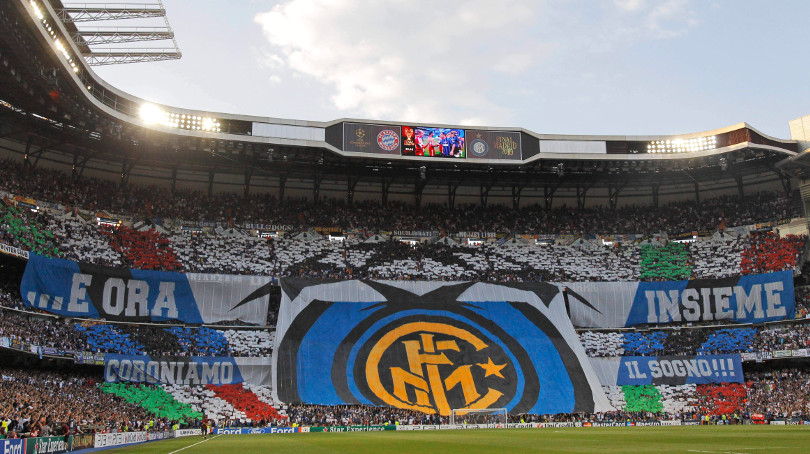
It was an idealistic gesture toward the nascent internationalism of the turbulent European politics of the early 20th century. Ironically, after winning their first Scudetto (literally, 'little shield') in 1910, Inter’s first captain Virgilio Fossati was himself later to fall victim to the nationalistic carnage of World War I.
Meanwhile, the design of the club crest produced by those early artistic founders is today ridiculed by Interisti as illegible. Italian football fans are notoriously superstitious. And the birth of Inter produced what must be one of the most eerie ghosts at any football feast.
Barbara Ballardini, 29, who compiled an entire academic thesis on the fans of Inter and Milan, explains: "Historically, AC Milan have experienced lots of ups and downs, with long periods without winning anything. Before the schism that created Inter they had already won three Scudetti, with the latest coming the year before the breakaway.
“But then they entered their longest-ever barren period. Milan had to wait another 44 years before they won their next Scudetto. And that inaugural Inter meeting was attended by 44 founding members." Woo, spooky.
NEXT: Mock funerals and a curious absence of violence
Screwdrivers vs Braggarts
For many years the Inter splitters were dismissed as a bunch of upper-class intellectuals, while AC Milan remained associated more with the working classes. Indeed, Milanese dialect provided the early nicknames Casciavit for Milan and Bauscia for Inter, roughly translated as ‘screwdrivers’ and 'braggarts’.
But these original socio-economic differences are now well outdated: like much of the rest of Italy, the club nicknames derive from team colours, hence Nerazzurri (black-blues) for Inter, and Rossoneri for Milan's red-and-black.
A recent survey also found little difference between the fans' political affiliations, with the traditionally left-leaning Milan fans shifting toward the centre since the arrival in 1986 of club president Silvio Berlusconi, the media billionaire and former Prime Minister of Italy's centre-right governing coalition.
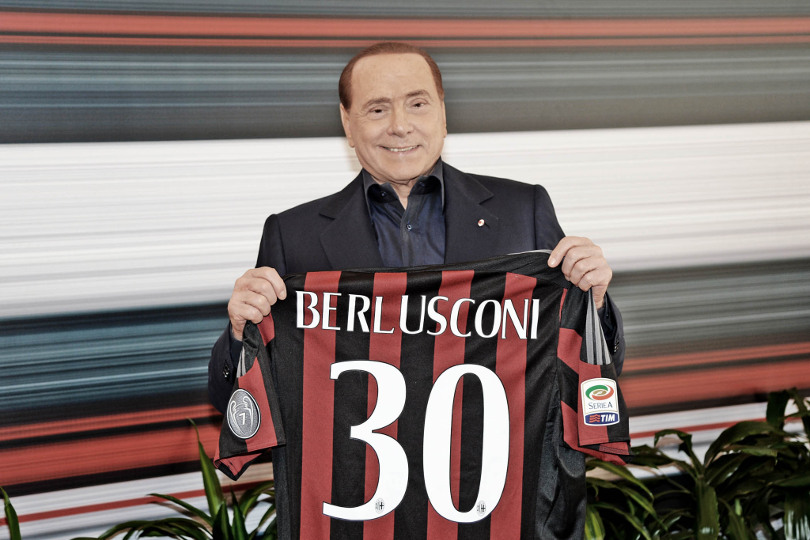
The very first meeting of the two Milan formations was, perhaps uniquely in the history of footballing derbies, not actually staged in the home city – nor even in the country. The two sides came head to head on a football pitch for the first time in Chiasso, some 50 miles north of Milan just over the border in Switzerland.
"Nobody really knows why," admits Fabio Monti. And if the affable Monti doesn't know, you suspect nobody does.
The result of the match, reported at the time as a 'Chiasso Cup' tie, was a 2-1 victory for the Milan Football and Cricket Club. Goalscorer Lana, Milan's No.7, went on to score the Italian national side's first-ever goal two years later.
Home sweet home
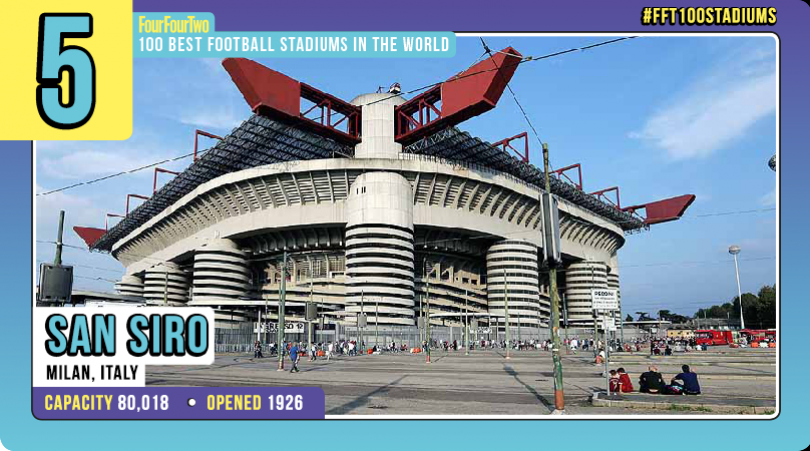
The renegade Inter's early history was peripatetic, shifting from one location to another until 1930 when they settled at the roofless Arena stadium just outside the city's inner ring of ancient gates which date back before Napoleon. Evocative of an ancient Roman amphitheatre, the Arena still hosts Serie D games.
Meanwhile Milan, with the big-money backing of the Pirelli tyre-manufacturing family – nowadays one of Inter's main sponsors – built a stadium on what was then the city periphery, in the San Siro area, in 1926; they sold it to the city authorities in 1935.
An enlarged version was inaugurated in 1939 with a 2-2 draw against England in a friendly international just four months before the outbreak of World War Two. In Italy, not even global conflagrations tend to stop football matches, and the following year Inter obtained permission to shift their title-winning end-of-season fixture against Bologna to the larger San Siro to accommodate the crowds.
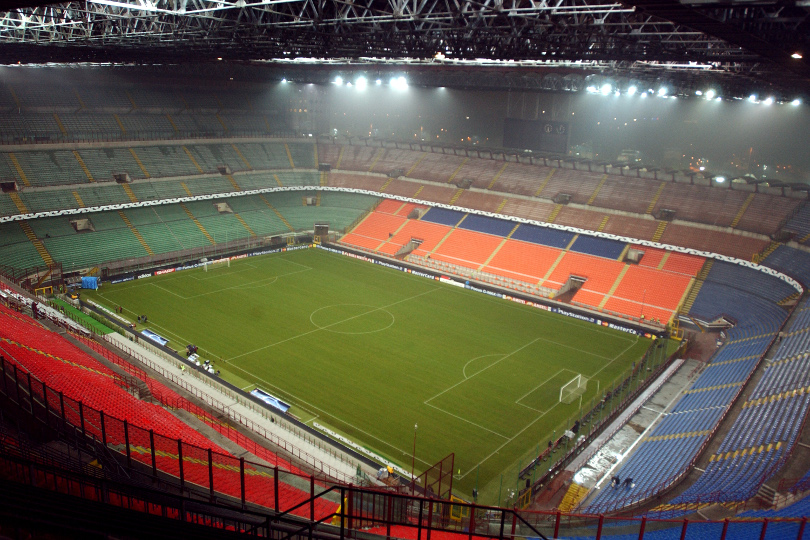
The odd couple were back living under the same roof. Or at least Inter had cheekily brought a toothbrush to stay the night. The domestic arrangement was to be made permanent from 1947.
"Yes, it’s a peculiar history," admits Barbara Ballardini, the thesis-writing Rossoneri fan. "Two huge teams with huge fan bases that share the same ground and don't really have any strong ties to any particular part of the city. They are devoid of religious or political rivalries, save for the ‘70s when some Ultra groups reflected the violent political environment in Italy at the time."
Mistaken identity
When asked by a sociological survey why they chose Inter, a third quoted family allegiance, but 18% said they couldn't remember
But one of the most curious features of Milanese footballing culture is that nobody can explain why they chose one team or the other. "As a little girl I just always liked wearing red. I'd dress up as a Milanista at carnival," laughs Ballardini. It's about as good a response as you get.
When asked by a sociological survey why they chose Inter, one third quoted family allegiance. Yet an astonishing 18% said they couldn't remember.
Thirty-five-year-old financial advisor Andrea di Cola is an Inter season-ticket holder: "When I was a kid they were a legendary club. Now, even though we haven't won anything for years, I like the fans. They are notoriously critical, yes, but there is a lot of self-irony in it all. It's good fun.”
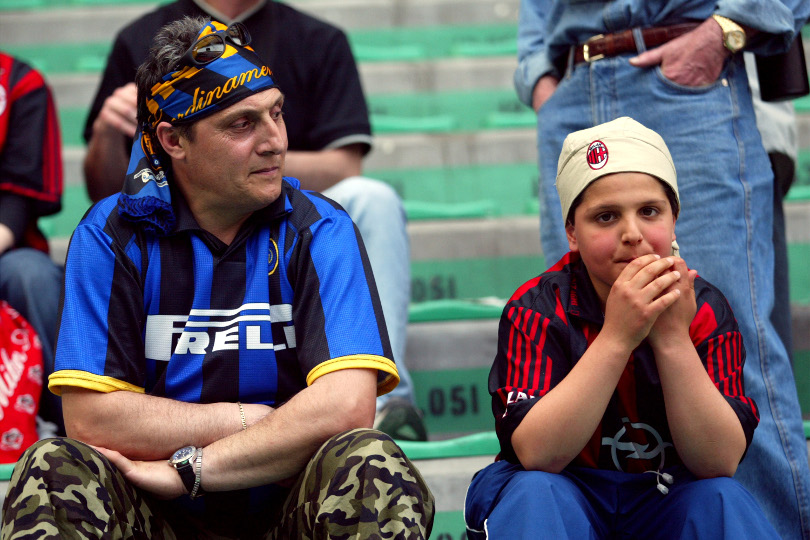
The derby's passion on the pitch comes without the surrounding air of menace sometimes associated with such confrontations. "There certainly isn’t the aggression that you get back home,” says Linda McCanna, a 30-year-old Manchester United fan from Cheshire now living in Italy with Massimo, her Milan season ticket-holding boyfriend.
"If a City fan – or a Liverpool fan, for that matter – wandered into a United pub they'd be likely to find a bit of bother, especially on a matchday. Here, they sing songs against each other at the match, but then afterward they're in the bar sharing a drink. They know each other, work in the same places, and live in the same areas."
Peace and quiet
Here, they sing songs against each other at the match, but then afterward they're in the bar sharing a drink
Perhaps surprisingly, the absence of violence also derives from the network of Ultras. "There did used to be trouble between the opposing Ultras," Barbara Ballardini explains.
"But back in 1983, when a particularly nasty derby confrontation outside the San Siro got out of hand – an Inter fan died – the Ultra leaders got together and agreed a kind of non-belligerence pact between themselves." It has held to this day.
“I’d say, if anything, Milan fans dislike Inter more than Inter dislike us," admits Max, a Rossoneri season ticket-holder. "We have to share 'our' stadium with them, and we've won more than they have. The Milan Curva Sud sings songs against Inter at every game, not only when we are playing against them."
The chant 'July and August' ridicules Interisti pre-season boasting which often comes to nothing by season’s end. Given Inter's lack of a Scudetto since 1989, it hits home. "But they seem more bothered about beating Juve,” says Max. "At least that's what they pretend."
"It’s true,” says Mario Corso. “For Inter the derby is a very important game. But historically, it's against Juventus that feelings ran highest." And Corso is an authority: the legendary left-winger of the GrandeInter side that swept all before them in the early-'60s.
Under coach Helenio Herrera, regarded as the inventor of the notorious catenaccio defensive style, Inter won four Scudetti, two European Cups and two Intercontinental Cups.
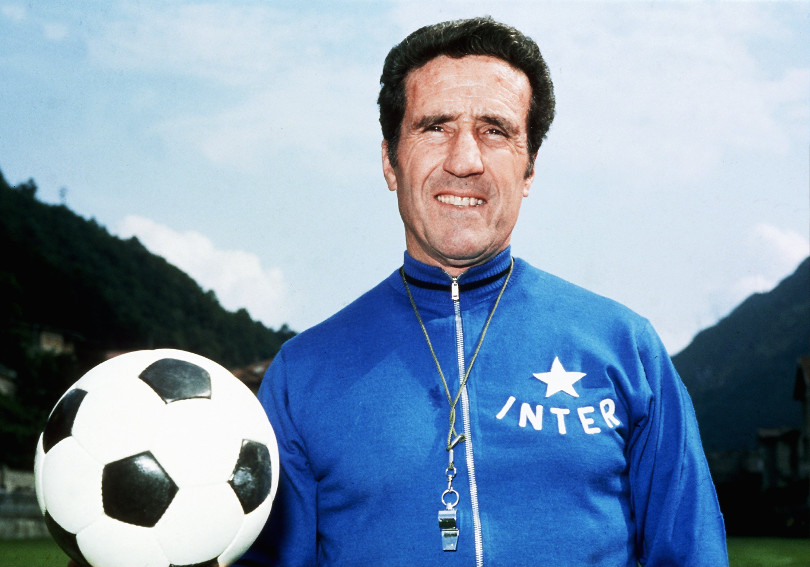
Corso, who notched up 414 league appearances for Inter, recalls: "In '65 we won 2-0 and overtook Milan to win the league. And I scored. That is a special memory. But against Juve there was an angry feeling, it always felt worse being beaten by Juve. It was almost a derby."
The derby was always the most important game – it meant being supreme, for the fans to say they were the top team in the city for a few months
Indeed, the Juventus-lnter fixture is classically known as Il Derby d'ltalia, being the only ever-present Serie A fixture and because of the Inter and Juventus supporters clubs spread around the country.
But across town at the Milan club headquarters in Via Turati, Cesare Maldini, whose captaincy included lifting the European Cup at Wembley after defeating Benfica 2-1 in 1963, dismisses any suggestion that Milan's city derby is anything less than a charged-up affair.
"No, no, the players really felt it," recalls the ex-Rossoneri leader, and father of current captain Paolo. "The derby was always the most important game – it meant being supreme, for the fans to say they were the top team in the city for a few months. When Milan won 6-0 a couple of years ago, and at 'their place' too," he chuckles, "it was a terrific shock. It really meant something."
From his own playing days he can't pick out one particular derby game, "but in those days the winning fans would go out celebrating in the streets, and carry mock funeral wreaths to the other club. Admittedly, you don't see that anymore."
NEXT: "It's a very 'English' rivalry"
Jumping the fence
The lack of animosity between the clubs increasingly extends to the transfer of players. Last season saw Dutch midfielder Clarence Seedorf, Croatian defender Dario Simic and highly rated trequartista (playmaker) Andrea Pirlo switch to Milan, following midfielder Cristiano Brocchi the season before.
"I could never have changed from Nerazzurri to Milan, no never," affirms the 61-year-old Corso.
"I had the opportunity,” reveals Maldini, "back before Paolo was born. Moratti (Angelo, father of current Inter president Massimo) wanted me but it didn't come off. In those days it was almost unthinkable to change colours. The players had certain bars and places we went to. Really, it was unthinkable."
When Milan were relegated to Serie B in 1982 they were in a very bad way financially. Inter helped them out by lending them three players; they came straight back up
But Alberto Costa, Milan correspondent at Corriere della Sera, insists switching shirts is not solely a modern phenomenon. “There are precedents. When Milan were relegated to Serie B in 1982 they were in a very bad way financially. Inter helped them out by lending them three players, Aldo Serena, Canuti, and Pasinato. They came straight back up into Serie A."
A modern echo of that camaraderie came last November. Inter's Christian Vieri sent a congratulatory text message to Andriy Shevchenko when the back-from-injury Milan striker scored the vital Champions League winner against Real Madrid. A week later the gesture was reciprocated when 'Bobo' Vieri himself ended a goal drought by blasting all four against Brescia.
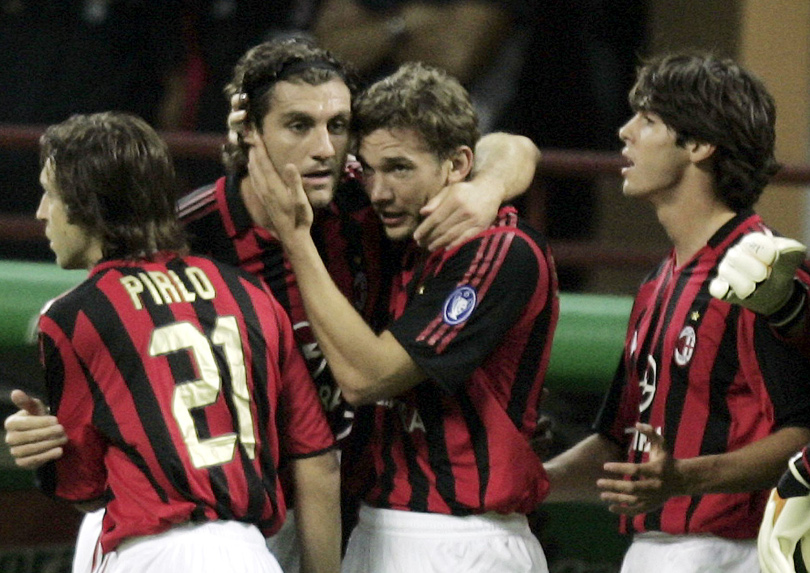
Corriere della Sera correspondent Costa sums up the relations between the Milan giants: "On the pitch, between the players, there is great rivalry. But it's very, let's say, very ‘English’: it's hard competition between professionals, it means a lot, but it's all done with fair play."
He makes a telling point: "When they changed the name of the San Siro it wasn't by accident that they re-named it the Giuseppe Meazza stadium." Meazza was an Inter hero whose career spanned 20 years until 1947, scoring 283 goals in 408 matches.
“But he actually played the last two seasons of his career with the Rossoneri,” says Costa. "He represents both clubs." The new San Siro museum has memorabilia and trophies of both teams exhibited together.
Culture clash
The derby may well serve to emphasise the original closeness of the Milanese clubs, but it also points up the peculiar differences in club 'culture'. The old delineation of working-class reds and aristocratic blues may be long gone. But Inter still hang on to that old patina of prestige, the first of the two to win the yellow star.
Nowadays, however, without a title win since 1989, it is an illustrious history that weighs ever heavier. "Two different realities," is how the two institutions are summed up by Fedenca Zangalli, whose role as football reporter for TeleLombardia, the leading regional TV station, gives her a unique insight.
"As a club Inter are still very much run like a family firm, dominated by Massimo Moratti. He is a fan, he loves the club. The criticism is that he loves it too much. There is no 'wall' dividing the owner from the management who run the club, the team. If he sees a player he likes, he buys him."
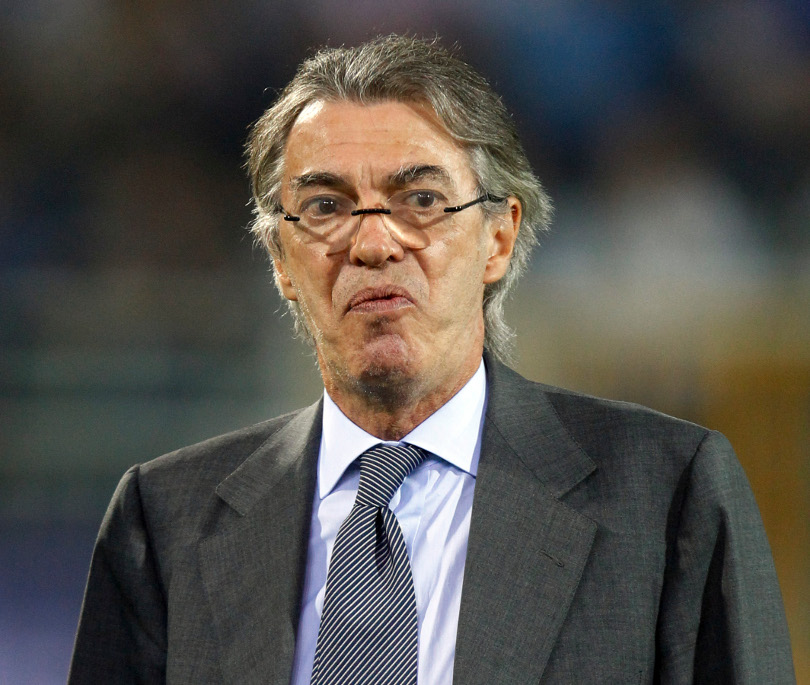
This is why only Inter could have tolerated the Ronaldo saga for so long. Juventus, for example, would have cut their losses and offloaded the troublesome star much sooner, as they did with Zinedine Zidane.
"Moratti is a lovely man, a romantic, which football needs. But perhaps he is too nice a person for this modern business of football. The arrival of Berlusconi in 1986 revolutionised Milan. They are now run like a multinational company. Unlike at Inter, everyone knows their specific role and little things don't blow up into great big problems,” said Zangalli.
The enormous Berlusconi-era accesses – six Serie A titles, three European Cups, three European Super Cups and two Intercontinental cups - reversed the imbalance in silverware with their neighbours. The Rossoneri now have 16 Scudetti to Inter's 13.
Whereas at Milan there's an upbeat approach, at Inter there is this culture of suffering. It is almost as though it's in their DNA to suffer
"Whereas at Milan there's an upbeat approach, at Inter there is this culture of suffering," observes Zangalli. "It is almost as though it's in their DNA to suffer. The more they miss out on winning something, the more anxious they become, the fans, the club, so the more pressure there is to win something. It's a classic vicious circle.”
But former player Corso denies Inter has a culture of pessimism: "There is a lot of irony, very self-deprecating. It's always been like that."
It’s perhaps no coincidence that many comics and literary figures are numbered amongst Inter's celebrity fans.
The odd couple
Away from the ultra-dominated Curva, Inter supporters in the costlier seats are notoriously the most impatient in Serie A. "Yes, it's true, they are very negative," says Fabio Monti, Il Corriere’s Inter-watcher. "If at half-time they’re not winning, they start to whistle against their own players every time they make a mistake."
Zangalli agrees: "That, of course, makes the players more nervous still. Several players have moved from Inter to Milan in recent seasons, and they all notice the difference arriving at AC."
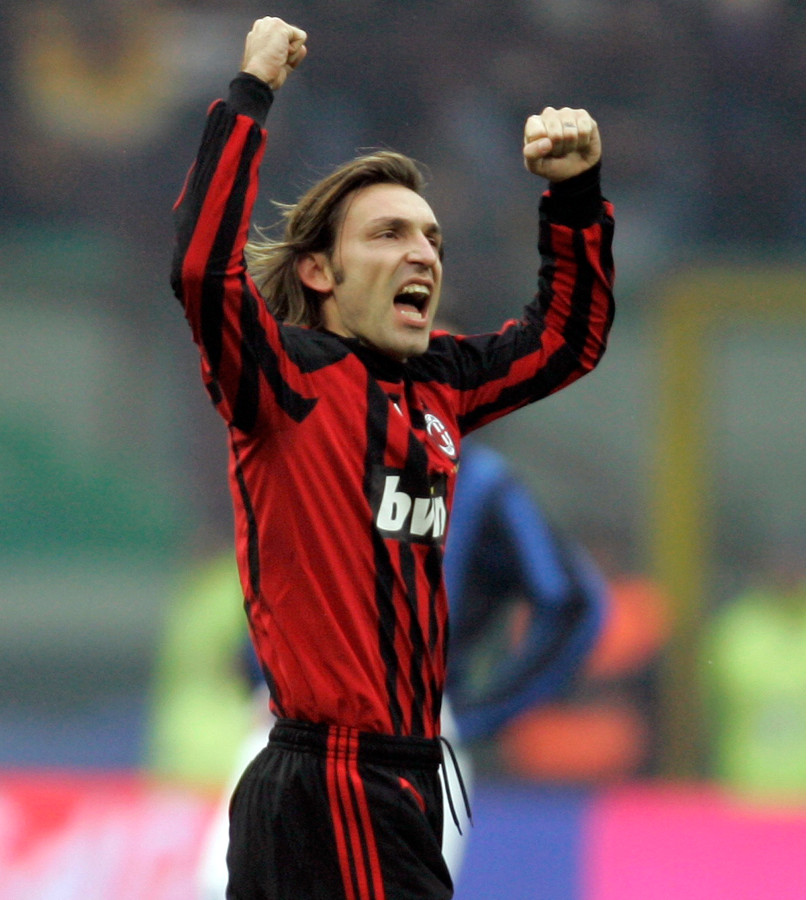
Is it just that success breeds success so the Milanisti are more relaxed and patient? "No, Inter fans have always been like that," bemoans Monti.
“Even before this barren period they were always more negative, more critical of their side. Perhaps it comes from having such great expectations because of their history, it's difficult to say,” he admits with an exasperated shake of the head.
Milan and Inter, the odd couple indeed. If AC are now the laid-back slightly devilish Walter Matthau, then Inter are the neurotic Jack Lemmon, trying too hard and beset by self-doubt.
Simplistically speaking, AC Milan's game classically is founded on a patient passing approach, dubbed by detractors as gioco orrizontale – the square ball. Inter's is traditionally built around one outstanding world-beater – Sandro Mazzola in the 1960s, Ronaldo in the late-1990s, Vieri now – exploiting the gioco verticale, the direct long ball.

Peppino Frisco, the rascally former Inter vice president, once defended the team's style by referring to the famous 1949 derby victory: "square ball five, long ball six.'
Milan sold over 53,000 season tickets for this current season. Inter, despite not having lifted that championship shield since 1989, and despite having inexplicably thrown it away by losing to Lazio on the final day of last season, sold only a shade fewer. The odd couple look destined to share domestic life for some time yet.
This article was first published in the February 2003 issue of FourFourTwo magazine. Subscribe!
World's Biggest Derbies • More Than a Game
